
In less than a week, the best Benchrest shooters in the world will converge on a quiet little community in Ohio for the Firearms Industry Super Shoot, the Superbowl of Precision Shooting. From May 25th through the 28th, over 320 participants will test their mettle against legendary shooters like Hall of Famers Tony Boyer, Lester Bruno, and Allie Euber. What will it take to win? Great equipment, great skill, some prayers to the wind gods, and seriously small groups. We're talking 0.2" Aggs or better. It's not easily done, but here some of the sport's leading figures explain how to succeed at the Super Shoot.
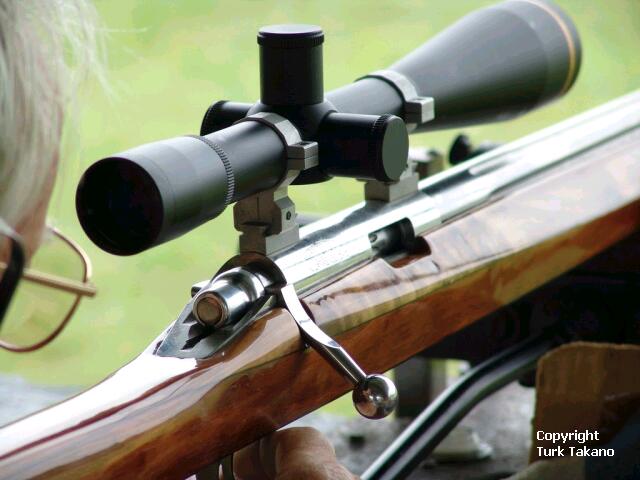
| "Shoot steady, 'safe' groups and you'll do OK. 'Shoot not to lose' is the way to approach this match. It's all about the Agg. I concentrate on the Big Trophy at the end." --Speedy |
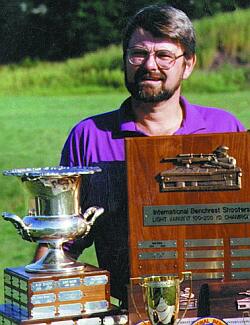 Jim Borden
Jim BordenGunsmith Jim Borden has been a real innovator in the world of Benchrest, helping to "improve the breed" of actions and stocks we use today. He's also a heck of a shooter, a Hall of Famer who's a threat to win any match he enters. Jim tells us: "This year I got serious, and I feel more prepared for the Super Shoot than ever before. I am taking two Light Varmint rifles sporting Rimrock Actions, Rimrock Stocks (Adamowicz pattern) and experimental 3-groove, 13-twist Hart barrels. I have had great luck with Hart barrels over the years and the new 3-grooves are working really well for me. Both of the rifles have proven to me that they shoot well over a wide range of temperature and humidity." No tuners for Jim this year: "I won't use tuners on my guns at the Super Shoot, though I like the concept. I'm doing some experimenting with rigs built along Calfee principles with a longer, skinnier barrel than can be tuned to an optimal vibration node. The idea is to let the barrel flex some, but tune it so the vibration node (dead spot) is at the end of the barrel." Jim will only bring 10.5-pound rifles to the Super Shoot. Some years ago he shot both LV and HV guns, but he only did real well in the heavy class. In 1993, on the advice of Paul Hart and Jack Demming, he "saw the light" and decided to stick with a light gun for all events. Jim explains: "The heavy gun will accept mistakes in bench techniques that later come back to bite you when shooting the ten-pounder."
Unlike many competitors, Jim preloads his ammo. Jim tells us: "I have my ammunition already loaded for the Shoot. It seems to be working as both rifles are consistently Agging in the low Ones. That's with a load of about 29.0gr N133, running about 3300 fps." Why is Jim pre-loading when most competitors try to load to conditions? Jim answers: "Loading to conditions on match day can kill you. All you can do is go by memory and guess-timates. I've found if your rifle has good vibration control, you'll typically have an accuracy window of 100-125 fps. So I set my preloads for velocity in the middle of the accuracy window and that lets me shoot in any conditions. Studies by Jack Jackson convinced me we could let ammo sit for as long as a year and the accuracy will hold." We asked Jim if he might consider switching to 8208 ("Thunderbird") powder if Hodgdon starts producing that again. Jim cautioned, "I've worked with 8208 quite a bit, and let me tell you, not all lots of T-Bird are alike. Some people feel 8208 is the Holy Grail, but not all lots of 8208 have performed the same for me. So if they bring it out again, I hope they pick the right formula."
If Jim has an ace up his sleeve, it will be some very special bullets: "I will be shooting some new 8.5 ogive bullets crafted by my friend, Jack Jackson. Jack is a very detailed experimenter and the bullets he has made for me are the among best I have ever used and I have shot plenty of great bullets from Allie Euber, Bart Sauter, Jef Fowler, Randy Robinett, Al Weaver and Ed Watson. Jack uses a very careful process that produces extremely consistent bullets. But sorry folks--they are not available commercially."
Jim told us he didn't want to get burned by optics problems this year, so he's trying something new. "Scopes have been the weakest link for years, and I've had a few scope-related disasters in the past with zero not repeating after recoil. I wanted to ensure that wouldn't happen again, so I topped both of my Rimrocks with Sightron 36X scopes modified to hold the erector tube in place during recoil. Ed Adams has done well with these scopes and so I decided to give them a try. My testing has shown me that the scopes have made a big improvement in the aggregates that I have been able to shoot in the recent past. I don't care about tracking ability that much for score shooting, but it is absolutely vital that the zero holds after the recoil cycle. Hopefully we've achieved that with the modified Sightrons."
Jim is really looking forward to the Super Shoot this year: "This is one of the few events I have never won. I have to say, I've been more serious than ever before about the Shoot, and I'll be heading to Ohio determined to do the best I can. But still, the Super Shoot is always fun for me. This year I will miss having my friend Bill Gebhardt along--he has been a companion there for many years. There are a lot of great shooters that attend the Super Shoot and it is a pleasure to shoot with them and interact with them."
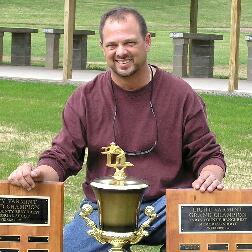 Wayne Campbell
Wayne CampbellWayne Campbell is one of the rising stars in the sport. He's scored a couple of big wins this year and Allie Euber tells us: "Wayne is shooting as well as anybody right now--he's a man to watch." What's the secret of Campbell's success? Wayne says: "Shooting is like golf or any other sport--you only get out of it what you put into it. I also give a lot of credit to Tony Boyer. I owe a lot to him. He is still 'the man'. He knows the sport from the ground up. The learning curve is cut way down if you listen to Tony." Like his mentor Tony Boyer, Wayne uses a 10.5 lb LV gun in all matches. He says switching gun platforms is counter-productive: "It's just another thing to keep up with--more trouble than it's worth. Going to the Heavy Gun leads to bad habits. With the Heavy Gun you tend to get sloppy."
Wayne will bring two 6PPC LV guns to the Super Shoot, one with a Farley action and one with a Stolle Panda. Both are Right/Right with ejectors. He uses Shilen 6-groove 1:14 twist barrels, and Bart's Ultra 68gr bullets. Wayne noted: "I've tried the 3-groove barrels but never had any luck with them." Wayne's Stolle sits in a Kelbly Klub stock, while his Farley LV is glued into one of Speedy's new Millenium stocks: "It ain't pretty, but it works really well," according to Wayne. Wayne prepared fresh brass for the Super Shoot, 20 cases per gun and a spare set for each. Wayne observes, "yes some guys shoot the same brass all year, but I'll prepare new brass for the major matches."
When asked if he had any advice for first-time Super Shoot competitiors, Wayne said: "Be careful--it's a hard place to shoot. I agree with Speedy that you need to shoot cautiously and not make mental mistakes." To illustrate, Wayne told us "I was at a match once, and I miscounted my cases so I only put four shots on one target. I was leading the match at the time and that little mistake earned me a DSQ."
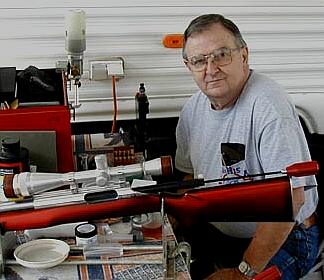 Mickey Coleman
Mickey ColemanA true southern gentleman, gunsmith Mickey Coleman is one of the nicest guys you can meet at a benchrest match. He is always open and willing to share his shooting knowledge with fellow shooters. Mickey shoots a Stolle Grizzly 6PPC, with ejector and microport, glued in a Kelbly SPG stock. Mickey tells us, "with its low center of gravity, the SPG rides the bag really well". Mickey is a big fan of Kelbly products. "I like working with the Kelbly operation--I like their attention to detail, their honesty, their work ethic. Plus Stolle actions are very consistent dimensionally. They head-space perfectly every time. If a customer wants me to set up a barrel for a Panda, all I need to know is the weight and length he prefers." At Super Shoot, Mickey will run a Douglas LV barrel or a Shilen LV barrel he recently got from Roger Avery. The Shilen has shown outstanding accuracy in his testing. Though Mickey is a strong proponent of Douglas barrels, he reminded us that Tony Boyer will try anybody's barrel in search of greater accuracy. Tony's philosophy, shared by Mickey, is "you never know where the next 'hummer barrel' is coming from."
Mickey's load is about 29-30 grains of Dupont/IMR 8208, with Winchester Small Rifle Primers. Mickey believes "the Winchesters are every bit as good as the Federals with 8208". 8208 is a military powder (invented for the AR15), that many top shooters think out-performs the current crop of commercial propellants. For bullets, Mickey will be trying something new this year--some 58gr, 8.5 ogive bullets from Brady Knight. "They shoot great in the Shilen", Mickey reports. Unlike some shooters who fireform with bullets, Mickey uses Bullseye powder, with a plug of modeling clay to hold the charge in the case. He feels this saves wear on his best-shooting barrels. We asked Mickey if he had any advice for new shooters. Mickey said--"stick with reliable equipment that you know will work. Benchresters tend to be like hummingbirds--they flit from flower to flower always looking for the next magic component."
Allie Euber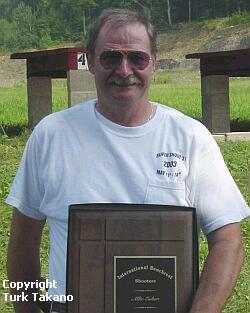
Bullet-maker and Hall of Famer Allie Euber is truly one of the living legends of Benchrest Shooting. Second only to Tony Boyer in Hall of Fame points, Allie always makes a strong showing at the big matches. Allie will bring a couple of 6PPC LVs to the Super Shoot. Both guns employ Farley actions with ejectors, glued into Borden stocks (Adamowicz pattern). His preferred LV barrel is a 21" Hart 6-groove, 1:13.5" twist. Allie's Heavy Gun features a BAT action with a 4-groove Krieger, 1:13.5" twist. Allie tells us "I'll stick with the LV if it's shooting real well, but if the conditions dictate, I'll switch to my BAT Heavy for the HV part of the match." Both Bruce LaChappelle and Sid Goodling have worked on Allie's rifles. He recommends both very highly.
Allie will be shooting his own Euber 66gr pills at 100 yards, and his 68gr bullets 200 yards. Nothing radical here--Allie's projectiles feature his older 9-ogive design. For loads, Allie tells us he'll probably be using Vihtavuori N133: "My load is about 53 clicks on a Harrell's, roughly 29.3 grains. But sometimes I go much higher at 200. At times I put as much powder as I can fit in the case--or pretty darn close." On the tuner issue, Allie says: "I'm not running a tuner, but I'm waiting 'til somebody kicks my butt with one. It'll probably happen sooner than I'd wish."
Regarding the competition, Allie observed: "Watch out for Wayne Campbell--he's shooting hot. The four shoots that we'd both been together he's won two, and was second once. He's a tough competitor, well-disciplined, and he's shooting real well. He's got his own range, great equipment and a great coach in Tony Boyer". Allie tells us the Super Shoot will be more competitive than ever: "It will be a tough shoot this year, the level of competition gets better each year. You have to shoot in the teens now to be competitive. You can't shoot 0.25 moa and win any more. You might get away with a quarter-moa one day, but you need to get into the teens to make up for the bad day."
Allie will be trying one new piece of kit. He will be testing a Weaver T-36 with an external tensioner. This is the same principle as a Tucker conversion, using a screw to tension the erector tube spring. Bart Sauter and Jim Borden are using a similar system, employing a nylon screw. This takes the slop out of the system and makes the scope track more reliably. When you need to adjust the scope, you just back out the screw a bit to make the adjustment.
Speedy Gonzalez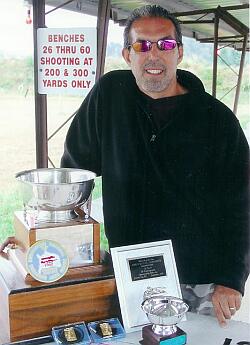
Win, lose or draw, Super Shoot 2005 will be memorable for gunsmith Speedy Gonzalez. This year he will be inducted into the Benchrest Hall of Fame, an honor he tells us really gives him a great sense of accomplishment: "Over the years, I looked up to the Hall of Famers--they are the gurus of the sport. There are less than forty guys now in the Hall of Fame, and it is just a great honor to be counted among them."
Now that he's joined the ranks of BR "gurus", we asked Speedy if he had any nuggets of wisdom for novice competitors at the Super Shoot. Speedy replied: "Watch the 60-70 yard flags--that's where the whole story's told, for both 100- and 200-yard matches. That little stretch dictates the way you've got to shoot. And don't get obsessed with shooting ultra-small groups. Shoot steady, 'safe' groups and you'll do OK. 'Shoot not to lose' is the way to approach this match. It's all about the Agg. I concentrate on the Big Trophy at the end."
Speedy will be using his new Benchrest stock design, crafted by Robertson Composites in Canada. He reports: "It's super straight and tracks really well. I can put 1 to 4 ounces of weight in the butt, but that is only used to balance out the gun, not to make weight." Like many other top shooters, Speedy will use his 10.5 lb LV gun all the time, rather than switch between light and heavy. "Remember", he says, "two-thirds of the multi-gun aggs are shot with the light guns. If you can't shoot an LV or Sporter well, you've got a hard row to hoe--trying to make it all up in one Heavy Varmint stage. I've seen people do damage to their scores when they move to a different gun."
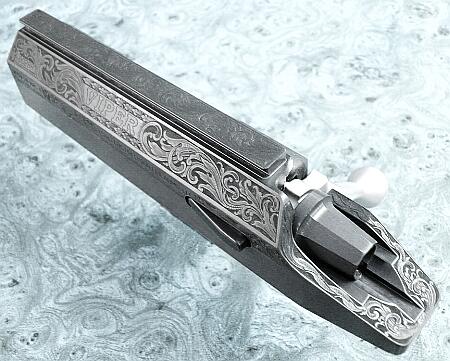
Speedy has always built guns that look as good as they shoot, and this year he'll bring another beauty to the Super Shoot--a LV with a highly customized, engraved Stiller Viper action that was two years in the making. It features a non-fluted bolt, microport, and a Sako extractor, plus some extra internal details Jerry Stiller crafted at Speedy's request. The engraved Viper will be mated to a 1:14 twist, 20.5" 6-groove barrel, the last original Pat McMillan-crafted barrel in Speedy's inventory.
Other than the action and the historically-significant barrel, Speedy doesn't plan to hang any special gadgets on his gun. No tuner for Speedy this year: "I have enough problems keeping my guns running right without adding all the variables a tuner creates. I'm not knocking them--I know for a fact that they
can work. But if a shooter with my years of experience in Benchrest finds tuners a bit daunting, someone who's new to the sport may have their hands full. In using a tuner, a new shooter may actually be hindering his performance."
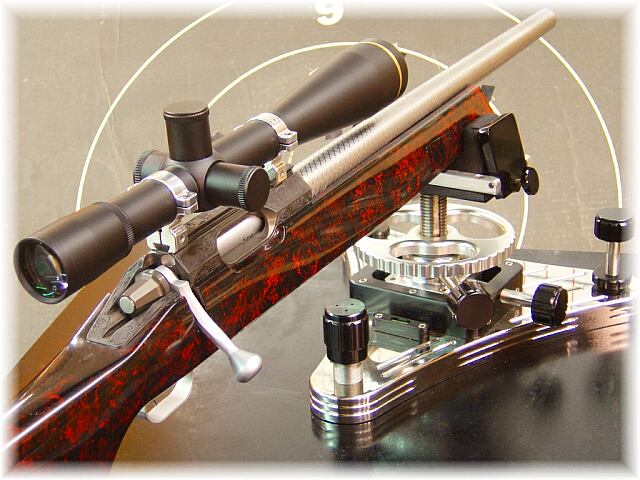
SPEEDY's INSIDER INFO -- New 'T-Bird' Powder in the Works?
Speedy's match load is about 29.2 grains of the IMR 8208 "ThunderBird" powder (he stockpiled this great propellant years ago). Speedy feels that T-Bird may be the most user-friendly BR powder ever made: "Once you have a good load worked up with T-Bird, you can shoot it at any location in the country, and in almost any conditions--no matter what the temperature or humidity." For those of you who'd like to benefit from T-Bird's great performance, take heart--Speedy and Tony Boyer are working with Hodgdon Powder to re-create the Thunderbird formula for a new generation of benchresters. Speedy has donated a couple jugs for testing, and Hodgdon's chemists are reverse-engineering the powder for possible future distribution. Maybe they should call it "Phoenix"--the mythical bird that rose from the ashes to fly again. |
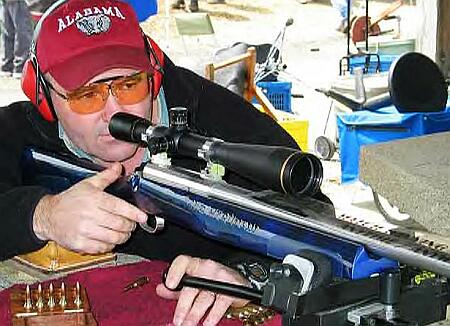 Bart Sauter
Bart SauterBart Sauter was the 2003 Shooter of the Year. His bullets will be used by a large share of the competitors at this year's Super Shoot. His projectiles enjoy a reputation for outstanding accuracy, and Bart has pioneered many successful new bullet designs. This year he plans to shoot both his 68gr Ultra, and his "Wedge" design. The innovative "Wedge" features a "fat" .2439 pressure ring, with a dual ogive--9 in the rear and 6 in the forward section. With its short bearing surface, the Wedge works best with a .045" or shorter freebore (Bart recommends you have at least .200" of shank in the neck). The Ultra 68, (which is winning a lot of matches these days), has a .2435 pressure ring and a more rounded front profile. A medium sized, tapered bullet, the Ultra measures .2435" on the pressure ring and starts as .2434" on the body and tapers off. Like the Wedge, it is a double radius bullet--9 ogive in the back blending into a 6 ogive in the front. It has about .040" more bearing surface than the Wedge.
Will Bart preview any new products at the 2005 Super Shoot? "I won't have anything new for this year's Shoot," he told us, "but I am working on a new 22-caliber bullet based on the Ultra design since the Ultra has done so well. I thought I'd try the same design scaled down to .223. It will feature a .2245" pressure ring--similar to the Ultra, but of course for a smaller bore. I'm hoping they'll be ready for spring 2006. We'll see how quick the die-makers can come up with the tooling."
This year Bart will campaign a BAT-actioned gun (no ejector) with a Hart 22" barrel. The twist rate is a bit faster than most: 1:13.625". Like Speedy and Wayne Campbell, Bart will shoot a LV in both classes. "I really don't like changing after getting the light gun in good tune." The stock is an older Kelbly BR model, but with a flat on the bottom of the buttstock. You won't see a tuner on the end of Bart's barrels: "I haven't played with the tuner enough to be comfortable with it. I found very small changes in tuner settings alter the point of impact pretty dramatically. To give you an idea, my index marks are 0.1" travel apart. Moving the tuner a single mark can shift the bullet's point of impact a full inch at 200 yards! You sure wouldn't want your settings to change in a match. You could really embarrass yourself if the tuner came loose."
Given the potential drawbacks, we wondered if Bart would like to see tuners outlawed: "No, I think allowing tuners can be a good thing because that encourages experimentation, which is how all our major accuracy gains were achieved. But personally, I have enough to worry about, with gun handling, reading the flags, and tuning the loads. So, for now at least, I'll let other people experiment. I think it's fine for other people to experiment--the sport needs some of that."
We asked Bart what accounted for his success the last couple of years. "It helps to get shots downrange quickly. I can usually send five in 15 seconds, and sometimes 12 seconds. That helps beat the conditions." Good brass is important he adds: "Most of the better shooters will have a new set of brass for the match. The guys that shoot the same 100 pieces all year don't normally win. I'll use practice brass for tuning. The brass I take to a major match will have just 2-3 firings on it. You can't win with brass that is less than optimal".
Bart's Tips for New ShootersBart offered this advice for newcomers to the Super Shoot: "Go ahead and sign up for the cash option! A lot of new shooters don't do it. A new shooter will often shoot several small groups, because they've worked hard on tuning their rifle. And one really small group could pay for their whole trip. I know a few shooters personally who did not sign up and lost some money."
Does Bart have any general advice on becoming a better shooter? "Absolutely" he said, "buy Tony Boyer's book! When that book is finally out I truly believe it will change the way people approach shooting benchrest. Given his 98 Hall of Fame points, we all can learn something from Tony. Tony scored enough HOF points at one shoot--from a single nationals--to get into the Hall of Fame. Think about that. I've been shooting for 14 years and I've only got eight. Tony has a common sense approach to every aspect of the game. For example, he has a no-nonsense way of evaluating barrels. He knows within 30 shots whether a barrel is capable of being competitive--i.e. worthy of taking to a big match. Tony believes you want a barrel that not only consistently shoots small groups, but ideally you want a barrel that performs well in the wind. It is controversial I know, but Tony believes the best barrels really will help you shoot through the conditions. Just because a barrel shoots in the calm doesn't mean it will shoot when the wind blows."
George Kelbly -- Super Shoot Ring-Master
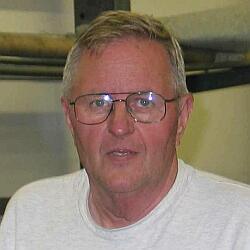 Head of the Kelbly "dynasty" that runs the Super Shoot every year, George will be shooting a somewhat unusual caliber, a .222 mag blown out with a .45 degree shoulder. Similar cartridges were popular before the 6PPC became dominant, but George feels his .222-45° is under-rated. "If you had as many people shooting the .222 mag as shoot the 6PPC, you'd see some impressive results with the .222. It is very consistent and capable of great accuracy." George uses Bill Forrester's 52gr, 7.5-ogive .22-caliber bullets, pushed by about 26.5 grains of N133. George's 10.5 lb LV features a Panda action in a Kelbly FB stock. In keeping with the "old-fashioned" .222 chambering, George's rifle features a vintage Lyman 20X All-American scope, boosted to 32x by Wally Siebert, a scope that is "100% reliable all the time". George feels that scope issues can be very frustrating and hard to diagnose--"the biggest equipment problem in the sport has always been scope reliability." Head of the Kelbly "dynasty" that runs the Super Shoot every year, George will be shooting a somewhat unusual caliber, a .222 mag blown out with a .45 degree shoulder. Similar cartridges were popular before the 6PPC became dominant, but George feels his .222-45° is under-rated. "If you had as many people shooting the .222 mag as shoot the 6PPC, you'd see some impressive results with the .222. It is very consistent and capable of great accuracy." George uses Bill Forrester's 52gr, 7.5-ogive .22-caliber bullets, pushed by about 26.5 grains of N133. George's 10.5 lb LV features a Panda action in a Kelbly FB stock. In keeping with the "old-fashioned" .222 chambering, George's rifle features a vintage Lyman 20X All-American scope, boosted to 32x by Wally Siebert, a scope that is "100% reliable all the time". George feels that scope issues can be very frustrating and hard to diagnose--"the biggest equipment problem in the sport has always been scope reliability."
We asked George about tuners--something that will be new at the Super Shoot this year. George opined, "We tried those back in the 50s and 60s, with not-so-spectacular results. Honestly, it's easier to tune the loads than it is to tune the barrels. But we know we'll see some wins by tuned guns, and that's probably a good thing for the sport." However, George cautioned: "Competitors should know that some of the sponsoring organizations will not let shooters change their tuner settings on the bench during the course of fire." So, don't be disappointed if you can't fiddle with your tuner while the clock is running.
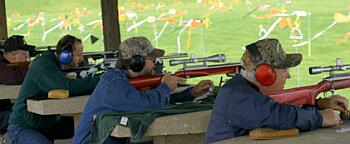 George wants everyone to know that there are plenty of slots available for the Shoot: "We've got 320 or so signed up and we can take 420. We have fewer Europeans at Super Shoot this year because many of them opted to come to the NBRSA World Benchrest Championships this fall instead." The Worlds run from September 13-17, 2005 at the Kelbly Range. George wants everyone to know that there are plenty of slots available for the Shoot: "We've got 320 or so signed up and we can take 420. We have fewer Europeans at Super Shoot this year because many of them opted to come to the NBRSA World Benchrest Championships this fall instead." The Worlds run from September 13-17, 2005 at the Kelbly Range.
Still very much a family operation, Kelbly's Inc. is operated by George Kelbly and his three sons, George Jr., Jim, Michael, and four full-time employees. Each Year Kelbly's hosts the Firearms Industry Super Shoot at the Kelbly's Range in North Lawrence, Ohio. Click here for a map, or scroll down the page to download the Super Shoot Registration Form. |
Acknowledgement: 6mmBR.com would like to thank all the shooters who were kind enough to share their experiences with our readers. Special thanks to Turk Takano (Wildshot.net) for permission to use his great photos, and of course we must thank the Kelbly clan and all the volunteers who work so hard each year to make the Super Shoot a resounding success.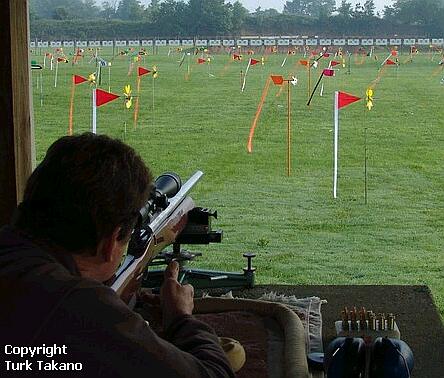 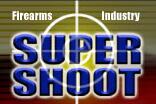
Super Shoot Match INFO
It's not too late to sign up!
As of May 18, there were about 100 spots remaining for the Super Shoot. George Kelbly says late entrants are welcome--just send in your registration as soon as possible. Click on the links below to download registration forms or to get directions to the North Lawrence, Ohio Range. |
Takano photos, copyright © Turk Takano, All Rights Reserved, used by Permission. Super Shoot Banner photo copyright © Kelbly's Inc., used by permission. Viper action photo and bench equipment copyright © SG&Y Rifles, Used by Permission. All content Copyright © 2005, 6mmBR.com, All Rights Reserved. No reproduction of any content without advanced permission in writing.
Topics: Super Shoot, IBS, NBRSA, SuperShoot, Kelblys, Kelbly's, 6PPC, 6 PPC, 6mm, 22PPC, Rail Gun, Stolle, Panda, Farley, Stiller, Ohio, Benchrest, BR, Bench Rest, Single-shot, competition, rifle accuracy, 220 Russian, Norma, 203B, Hodgdon Powder, H322, Varget, Vihtavuori, Bart's, Barts Bullets, Brady Knight,Shilen, Vihtavuori, N133, 8208, Thunderbird, T-Bird, Berger Bullets, Sierra, Sierra, MatchKing, Competition Shooting, stocks, Oehler, stainless barrel, reloading, powder, case forming, neck-turning, Lapua Brass, Scenar, bullets, precision.
